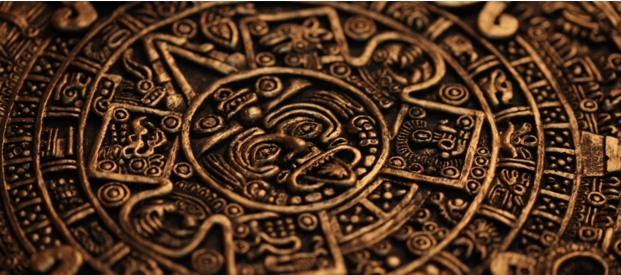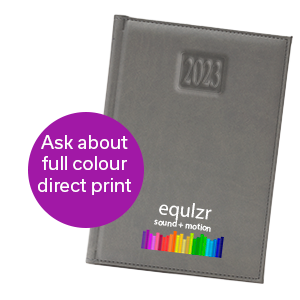The End Of The World As We Know It – A Guide To The Mayan Calendar
 Two years ago, school classrooms and corporate offices all across Great Britain exploded with anxious chatter about the end of the world. It was suggested that we might all be hurled into a biblical fireball. It was claimed that an epic storm, or even an eruption at Yellowstone Park, might do the job. For the most part, it was nothing but the more mischievous among us trying to fill our gullible friends and colleagues with a completely unnecessary sense of dread. Yet, there is still so much that we don’t understand about the world – will you admit to being just a tiny bit nervous about the supposed Mayan prophecy, predicting the end of the world on 21st December 2012?
Two years ago, school classrooms and corporate offices all across Great Britain exploded with anxious chatter about the end of the world. It was suggested that we might all be hurled into a biblical fireball. It was claimed that an epic storm, or even an eruption at Yellowstone Park, might do the job. For the most part, it was nothing but the more mischievous among us trying to fill our gullible friends and colleagues with a completely unnecessary sense of dread. Yet, there is still so much that we don’t understand about the world – will you admit to being just a tiny bit nervous about the supposed Mayan prophecy, predicting the end of the world on 21st December 2012?
The 2012 Mayan Apocalypse phenomenon encompassed a series of eschatological beliefs that the world would end, at the point at which the 5,126 year long Mayan calendar expired. The expiration point was, of course, December 21st – a date when millions of people all over the world earnestly waited for and fully believed in the imminent destruction of the planet. It seems like such a strange thing to believe in, especially since all of the world’s leading scientists and astronomers dubbed the so called prophecy nothing but absurd pseudoscience.
The question is – why did the world take the prophecy so seriously? What is it about the Mayan calendar that has captured human interest for so many years? Why did the calendar end on 21st December 2012? It could be that a more pertinent question is, why did nobody listen to the Mayanist scholars when they said that no extant classic Maya accounts allude to an impending doom of any kind? According to them, eschatological zealots were merely misrepresenting the infamous Mayan Long Count calendar, because they didn’t know how to read it properly. Ironically enough, the Mayan calendar isn’t nearly as confusing as it seems – you just have to accept the fact that our civilisation wasn’t the first, or even the most important.
The ancient Maya kept time in their own special way. Whilst the Mayan calendar may be heavily reliant on hieroglyphs, the basic principles of time keeping are always the same – they were counting the days. The only difference is that the Maya didn’t stop counting and reset their calendars at the same point that we do now. The Gregorian calendar, that is used throughout the western world, is shaped and defined by the solar cycle. We start counting at the beginning of a solar cycle and we stop when it reaches its end. The Maya had three different and completely distinct calendars – the Tzolk’in, the Haab’ and the Long Count Calendar.
The Tzolk’in calendar lasted 260 days and then it was reset, just as the Gregorian calendar is reset after 365 days – it was used for scheduling religious ceremonies and events. The Haab’ calendar was based on the solar system, but it didn’t account for the surplus quarter days that make up a leap year. This meant that the Haab’ solar calendar tended to wander a little in relation to the seasons. The final, and most controversial, of the Maya calendars is the Long Count calendar – it ended on 21st December 2012, after completing an epic 5126 year long cycle. The question is – what were the Mayans counting down to?
There is no doubt that the date must have been important to the Mayans – in many ways, they were as fascinated with time keeping and recording as we are today. Yet, the only historical evidence pertaining to the date is two ancient carvings depicting kings and their long lasting legacies. There has never been an artefact found that relates or pertains to any kind of apocalypse or so called doomsday. According to archaeologists and scholars, the Mayan calendar is probably nothing more than a way to celebrate the legacy of important contemporaneous figures. This means that 21st December 2012 is more than likely a randomly picked date at which the Maya believed their kings would still be celebrated. Yet, that isn’t as dramatic or as exciting as the end of the world now is it?
Whilst the Mayan Long Count calendar did indeed end on the 21st December 2012, we will never really know why this is the case. The only thing that we can be certain of is the fact that they weren’t trying to predict the end of the world. It is far more likely that they were celebrating the influence of their kings, or that they were simply counting out their own personally defined cycles of creation. In fact, archaeologists have repeatedly pointed to the fact that the Maya both invented and used numerical units that allowed them to count millions of years into the future. It is true that these units were rarely used, but it’s also true that a civilisation would have to be pretty dim to waste their time counting into a future that they were certain wouldn’t exist after 21st December 2012.
It is easy to think of the calendar as a fairly static and mundane thing – it may be an essential item, but it does nothing more than record the passage of time. At the very least, the Mayan doomsday phenomenon highlighted the surprising fluidity and diversity of the humble calendar. It woke the entire world up to the fact that the universe is itself a timekeeper, a cosmic calendar with an inevitable expiration date that we cannot yet see.









